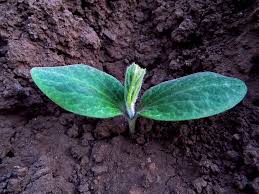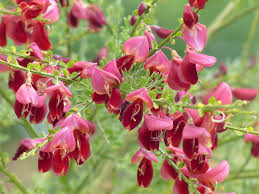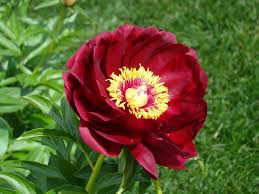 It is only approximately seven weeks until the longest day. There, we’ve said it. Here at Pengelly, some days we’re still wearing many layers of clothes, being battered by hailstorms and thinking about lighting the wood-burner. Others, we are down to t-shirts and shorts (not we two, we might add) and watering like fury.
It is only approximately seven weeks until the longest day. There, we’ve said it. Here at Pengelly, some days we’re still wearing many layers of clothes, being battered by hailstorms and thinking about lighting the wood-burner. Others, we are down to t-shirts and shorts (not we two, we might add) and watering like fury.
So far Mother Nature has been rather capricious with us during April – Easter made us believe we were in the Caribbean, and Storm Hannah, back in the Mid West storm season. We hope she will remedy this with a glorious and balmy summer but however Gung-ho you are feeling with panting the tender stuff such as bedding annuals, and more delicate veg, be ready to pounce with fleece and wraps in case of a dip in temperatures. We’re not out of the woods yet for 2019.
Now, back to the jobs in hand.
At this time of year, moss can make the lawn look pleasantly green but, given the glimmer of a good summer, it will soon become a brown mess if the moisture is retained. Now is a great time to apply lawn treatments to deal with this. The moss will go a ghastly black, but rake this out and let the remaining grass rejuvenate. Don’t put the moss in your composter by the way – the chemicals used to kill it aren’t that nice, and if any moss survives, chances are the spore will spread and take up root in your beds next year.
 If the grass is really sparse after raking out the moss, you can always over sow it with some fresh grass seed. A handful for the lawn, a handful for the birds… If moss is a continuous problem, as it often is in our damp Cornish climate, aerate your lawn by making holes in it: for a small area, a garden fork will do, or you can hire a hollow tine aerator for bigger challenges. Brush sharp sand into these holes to improve the drainage.
If the grass is really sparse after raking out the moss, you can always over sow it with some fresh grass seed. A handful for the lawn, a handful for the birds… If moss is a continuous problem, as it often is in our damp Cornish climate, aerate your lawn by making holes in it: for a small area, a garden fork will do, or you can hire a hollow tine aerator for bigger challenges. Brush sharp sand into these holes to improve the drainage.
If weeds are taking over too, apply a weed, feed and moss killer treatment. You may have to do it a couple of times to knock out some of the tough weeds but it is worth it. Funky devices are available to make your job a little quicker and easier, especially if you have a large area to treat.
As the mowing season is getting underway, just a reminder to start your first cut on your mower’s highest setting – don’t scalp it. Gradually drop the height as you mow more regularly.
The vegetable garden should be full steam ahead, but be careful of the more tender subjects as the nights are currently still cool. As we write, they can still be in single figures, which is frankly bracing. Runner beans, courgettes, chillies, tomatoes etc will not appreciate low temperatures. If you haven’t sown them yet, don’t panic. Later sowings will catch up the earlier ones, often overtaking them as they haven’t been checked along the way. If you have the room, it’s a good idea to sow the basics (carrots, lettuce, spring onions, beetroot, radishes) in small batches every two or three weeks for a more spaced harvest. If you don’t have much ground spare, these will all grow equally well in pots and troughs.
 The endless battle with the weeds begins this month: they germinate while you blink and grow at twice the pace of anything else. Raised beds do make life easier and persistence is the key; little and often, hopefully will win the war. Planting things like courgettes and squash through weed matting lessens the work load too.
The endless battle with the weeds begins this month: they germinate while you blink and grow at twice the pace of anything else. Raised beds do make life easier and persistence is the key; little and often, hopefully will win the war. Planting things like courgettes and squash through weed matting lessens the work load too.
In the flower garden all the annuals will be readily available in the garden centres. Now is the time to plant up hanging baskets, but keep them under cover until the end of the month, just allowing them to grow on and fill the basket. Don’t be too quick to plant out the less hardy annuals; busy lizzies and begonias hate the cold and would relish another couple of weeks under cover.
Hopefully all your hardy perennials (the ones that come up each year but don’t go woody and often disappear underground for the winter) will be poking through happily during May. If you have any looming holes, now is the time to hunt out some replacements. Perennials are wonderful for providing colour, being easy to keep in check and can add interest around shrubs that may have finished doing their thing.
 Towards the end of this month is the time to do the Chelsea chop. A lot of perennials that maybe grow too tall or you just want to flower a little later benefit from being cut hard back. Sedum, phlox and asters are prime examples. So when you’ve been inspired by the amazing creations at the show, get out in your garden and chop those perennials down. If you have a large clump of a particular perennial, some people will cut back maybe a third of it so that that clump flowers a bit more successionally. It’s really up to personal taste how or whether you do it.
Towards the end of this month is the time to do the Chelsea chop. A lot of perennials that maybe grow too tall or you just want to flower a little later benefit from being cut hard back. Sedum, phlox and asters are prime examples. So when you’ve been inspired by the amazing creations at the show, get out in your garden and chop those perennials down. If you have a large clump of a particular perennial, some people will cut back maybe a third of it so that that clump flowers a bit more successionally. It’s really up to personal taste how or whether you do it.
By now the magnolias will mainly be over (warm weather + strong winds = blossom gone) but the flamboyant rhododendron will be kicking in with a vengeance. Rhodis (including azaleas) are quite an amazing genus, with a range of sizes and colours to suit everyone, the only one proviso being that you do need an acid soil; otherwise keep it in a pot.
The brooms will also soon be laden with their deliciously perfumed flowers. They come in a range of colours from white to yellow, through to pink and red and even warm orange. They are extremely tolerant plants, and given a sunny well-drained position, withstand wind quite happily because of their strappy branches and adapted leaves. Think of some of the most blasted and dry places in this and other Mediterranean counties (moorland, coastal, mountainous) and you will see native yellow brooms thriving there.
 On the herbaceous front, the perennial geraniums will kick in this month. Another huge genus with literally something for everyone, and most growing conditions. A good blue is ‘Rozanne’ who blooms prolifically throughout the summer. If she starts to look straggly chop her back and she’ll repay you with even more flowers.
On the herbaceous front, the perennial geraniums will kick in this month. Another huge genus with literally something for everyone, and most growing conditions. A good blue is ‘Rozanne’ who blooms prolifically throughout the summer. If she starts to look straggly chop her back and she’ll repay you with even more flowers.
A final real show stopper for May has to be the Paeonia (Peony) family; whether it be the herbaceous varieties or the exquisite tree Paeonia, they all make your mouth water, and can be as subtle or as blousy as you want. A lot of the herbaceous varieties start with magnificent red shaded foliage, to be crowned with stunning, often scented flowers. If you are lucky enough to have a good size clump they are fabulous cut flowers.
Plant in a sheltered, sunny, but not baking hot position, with lots of organic matter in the planting hole. Take care not to plant them too deep or they will be shy to flower, and make sure you have chosen their home carefully, as they resent being moved. The tree Paeonia is a similar beast, only it bears it flowers on a woody frame work and can become much bigger in stature. Look further than the rather basic yellow Paeonia ludlowii at the Chinese hybrid; they are slightly pricey but simply exquisite.
May is a mad month as far as workload is concerned but hopefully you will be rewarded with admiring the fruits of your labours in the warmth. Writing this, the reward seems a long way off but we gardeners are ever the optimists!
 And forgive us a final reminder in this column for the magnificent Veryan Plant Sale and Swap in aid of the restoration of Veryan Village Hall on the 18th May from 10-2 in said hall. See Roseland Online, Roseland Magazine April 2019 and Veryan Parish Hall Facebook page for more information.
And forgive us a final reminder in this column for the magnificent Veryan Plant Sale and Swap in aid of the restoration of Veryan Village Hall on the 18th May from 10-2 in said hall. See Roseland Online, Roseland Magazine April 2019 and Veryan Parish Hall Facebook page for more information.
We are already have hundreds of interesting and exciting plants, plus tools and other garden paraphernalia. There will be a table just for children to get some plants (children 14 and under go free) and CHAOS, our local wonderful charity will be there to show case some of their projects which include a Kindness Garden. It is going to be a blast! See you there we hope.
Sarah Daniel and Helen Robins, Pengelly Garden centre
www.pengellygardencentre.co.uk
Follow us on Facebook and Instagram
